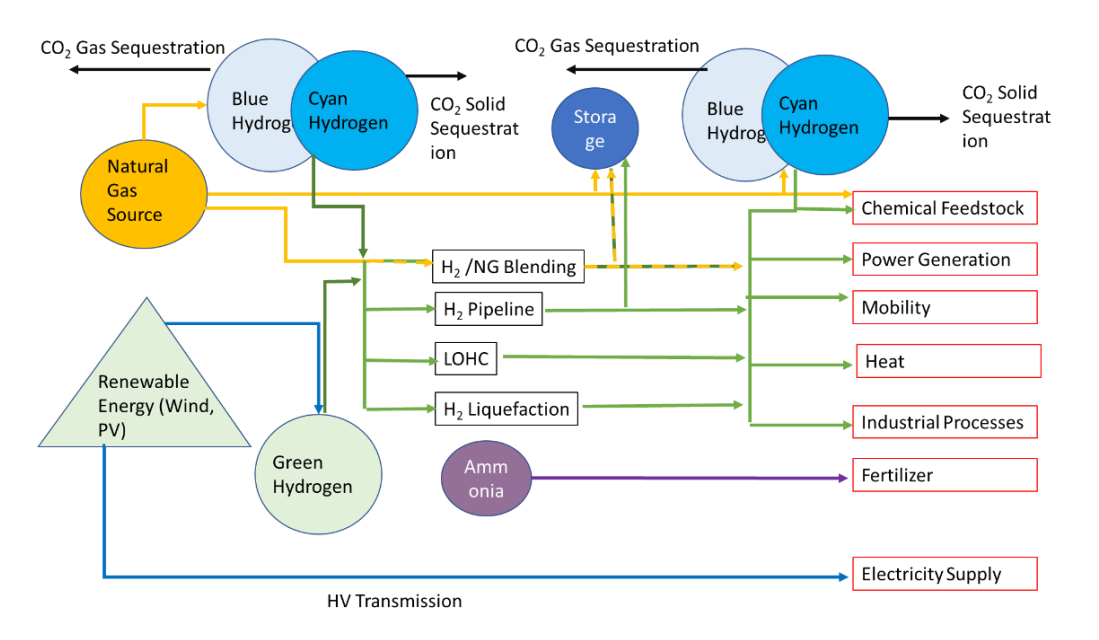Webinar discusses carbon capture and the hydrogen economy
Turbomachinery International's resident Myth Busters teamed up to discuss the viability of hydrogen and carbon capture in decarbonizing industries that rely upon turbomachinery.

Turbomachinery International hosted the “Carbon Capture, Hydrogen, and Achieving a Net Zero Turbomachinery Footprint” webinar on September 9th,2021. The webinar, sponsored by Siemens Energy, Sundyne, and RelaDyne RRS, discussed the viability of hydrogen and carbon capture in decarbonizing industries that rely upon turbomachinery. TMI brought on its resident Myth Busters, Klaus Brun and Rainer Kurz, to educate the audience on the matter. Brun is Director of R&D at Elliott group, while Kurz is Manager of Gas Turbine Engineering at Solar Turbines.
Brun kicked off the discussion by listing the myriad ways in which the energy industry could decarbonize – ranging from employing one of the many colors of hydrogen to implementing carbon capture at existing gas plants. He focused on comparing blue and green hydrogen. Economically speaking, he said blue holds the advantage. As it stands, green hydrogen is expensive to produce due to the high cost of electrolysis. It also has a subpar roundtrip efficiency of less than 40%. Brun believes that blue hydrogen will be the dominant energy source for the foreseeable future, until the cost of electrolysis is reduced. He expects that this could take 30 or more years.
Transitioning to hydrogen also requires one to address the means of transportation. To that effect, Brun offered a couple of options. Option A – blending hydrogen with natural gas in the existing pipeline network. He pointed out, however, that the operational and safety impacts are presently unknown. Option B calls for the development of a pure hydrogen distribution network – through repurposing old oil and gas pipelines and/or building new ones. This would eliminate much of the technical and safety challenges but would come with a high cost to both time and money.
Brun’s “likely hydrogen economy scenario” boils down to the following:
- Blue hydrogen will be dominant for at least 25-30 years until electrolysis becomes cheaper.
- Natural gas will continue to be transported using existing pipeline infrastructure.
- Conversion from natural gas to blue hydrogen will occur near or at end-user, where it is more economical. This could happen at regional hydrogen hubs or via pre-combustion carbon capture.
He also noted that there are three value streams – natural gas, hydrogen, and carbon dioxide. On that last point Brun briefly remarked on how there are plenty of CO2 storage sites, but they do not align geographically with sites of production. He expects that between 50,000 to 100,000 miles of new CO2 transmission pipeline will be required in the US by 2050. Natural gas pipeline capacity will have to be increased to meet hydrogen transportation demand. Hydrogen compression will not be as prevalent in the near-term but will change as green hydrogen becomes more ubiquitous. Carbon dioxide compression, on the other hand, will be extremely common. This will occur during the transfer from source to pipeline pressure, recompression in the pipeline, and finally compressing the CO2 for storage in geological formations.
HYDROGEN COMPRESSION
Brun discussed hydrogen compression, covering some of the difficulties brought on by hydrogen’s characteristics. Design challenges include light gas compression, sealing, materials/coatings, and safety. Pure hydrogen compression requires either a large number of compression stages or high-tip speed impellers. He mentioned that 1
Hydrogen compression is difficult but has historical precedent. Brun remarked that his company, Elliott, has been building hydrogen compressors since 1955 and has produced over 100 hydrogen-rich compressor trains since 2001.
Some materials challenges related to hydrogen compression include higher impeller spin speeds, which calls for the use of materials with a higher strength-to-density ratio. Another challenge is hydrogen embrittlement, which can be remedied via the use of coatings.
Brun believes that natural gas will be in increased demand for its use in creating blue hydrogen. This means that natural gas compression and transportation infrastructure will need to be improved and expanded. He suggested increasing throughput in existing pipelines by installing higher horsepower compressors, increasing pipeline and compressor pressures, and installing more loops. There may also be an increase in electric motor-driven compressors along the pipeline.
DESIGN CHALLENGES AND SOLUTIONS
Rainer Kurz agreed that blue hydrogen is likely to be a dominant fuel source moving forward, which calls for a means by which the CO2 byproduct could be sequestered.
While hydrogen can be burned in conventional or diffusion flame combustors, lean premixed combustors face challenges using a hydrogen blend. This is due to hydrogen’s high flame speed creating a high risk of flashback in these systems. Higher flame temperatures also come with higher NOx emissions. Compressor packages must be carefully evaluated before use in hydrogen combustion.
One chart showed the increased compressor work required for a hydrogen blend. As hydrogen increases, so does the amount of work required. 100% hydrogen increases compression head by about 1 order of magnitude while power increases by 5. Despite the dramatic increase in power consumption, the efficiency in transporting gas via pipeline prevents a sizeable increase in energy consumption and CO2 emissions. Kurz believes that transporting hydrogen via pipeline is an attractive option overall.
He showed the results of a test simulating a 20% hydrogen blend in a natural gas pipeline. The amount of energy transported in the pipeline remained constant. But there was an increase in both power consumption and energy consumed per energy delivered.
Introducing hydrogen to a natural gas pipelines will require compressors to run faster to meet demand. Kurz stated that once a certain percentage of hydrogen blend is exceeded it will be necessary to restage the compressor or look for alternatives. In an example, a pipeline running up to 20% hydrogen needed three compressor units, whereas only 2 were needed at 10% hydrogen or less. Kurz concluded that hydrogen transport in pipelines is advantageous when compared to other transportation methods.